Health
Dietary Management for Kidney Stone Prevention
Kidney stones, a widely occurring health problem, necessitate effective treatment strategies, such as kidney stone removal treatment.
Dietary management is a primary weapon in preventing kidney stones, significantly reducing the risk of stone formation. Given kidney stones’ high prevalence and associated risk factors, treatment and preventive measures are essential for optimal kidney health.
Understanding Kidney Stones
Kidney stones, like tiny, hardened intruders, can cause discomfort in your body.
These stones form when substances like calcium, oxalate, and uric acid, typically dissolved in your urine, build up and turn into solid masses. This is where kidney stone removal treatment comes into play to evict these painful squatters.
Different Types Of Kidney Stones And Their Dietary Considerations
Here’s a simple table that outlines the different types of kidney stones and their dietary considerations:
| Type of Kidney Stone | Dietary Considerations |
| Calcium Oxalate Stones | Limit foods high in oxalates (e.g., spinach, rhubarb, nuts), and limit animal protein intake. |
| Calcium Phosphate Stones | Limit animal protein intake and foods high in sodium. Maintain a balanced calcium intake. |
| Uric Acid Stones | Limit intake of purine-rich foods (e.g., red meat, organ meats, shellfish) and maintain hydration. |
| Cystine Stones | Maintain hydration to dilute the concentration of cystine that escapes into the urine. |
| Struvite Stones | Infections cause these, so dietary changes are less effective. Proper treatment of urinary tract infections is crucial. |
Remember that dietary changes should be individualised and done under the guidance of a healthcare provider.
Factors That Contribute To Kidney Stone Formation
Mentioned below are the significant factors that contribute to kidney stone formation:
- Dehydration: Insufficient water intake can concentrate your urine, increasing the likelihood of stone formation.
- Diet: Consuming high amounts of salt, protein, or sugar can contribute to kidney stones.
- Genetics: If kidney stones are common in your family, you may be at higher risk.
- Certain medical conditions: Some conditions, such as gout or inflammatory bowel disease, can increase your chances of developing kidney stones.
- Medications: Certain drugs, like diuretics or calcium-based antacids, may contribute to stone formation.
Foods to Avoid for Kidney Stones
Here’s a simplified table listing foods that one should consider limiting or avoiding for kidney stone prevention:
| Food Category | Foods to Limit or Avoid |
| High-Oxalate Foods | Spinach, rhubarb, nuts, beetroot, chocolate, wheat bran |
| Animal Proteins | Red meat, poultry, eggs, seafood |
| High-Sodium Foods | Processed foods, canned soups, fast food, salty snacks |
| High-Sugar Foods | Soda, sugary drinks, sweets, high-fructose corn syrup |
| Purine-Rich Foods | Organ meats, shellfish, anchovies, sardines, mussels |
Please remember that while this table provides general guidance, dietary recommendations can vary depending on the type of kidney stone and individual health factors. Always consult with a healthcare provider for personalised advice.
Strategies For Reducing Oxalate Intake In The Diet
Keeping kidney stones at bay requires smart eating habits. Hence understanding what to avoid is a step towards reducing the need for kidney stone removal treatment.
Let’s start with oxalates in foods like spinach, nuts, and chocolate. Too much can lead to stones. Reducing oxalate intake involves trading high-oxalate foods for lower-oxalate choices, like cauliflower, cucumbers, and apples.
Recommendations For Managing Calcium And Sodium Intake
Calcium and sodium are vital players. Don’t skip calcium! It seems counterintuitive, but sufficient calcium intake can bind to oxalates and prevent stone formation.
Go for low-fat dairy and leafy greens. As for sodium, too much can trigger stones. Processed foods are sodium’s secret hideouts, so opt for fresh foods when possible.
Kidney Stone Diet Chart
Navigating a diet for kidney stone prevention can seem daunting.
Here’s a simple sample day’s menu to guide you in making stone-discouraging meal choices:
| Meal Time | Foods |
| Breakfast | Oatmeal with low-fat milk, a handful of blueberries, a boiled egg |
| Mid-Morning Snack | A small apple, a glass of water |
| Lunch | Grilled chicken salad with low sodium dressing, a slice of whole grain bread |
| Afternoon Snack | A handful of almonds, a cup of low-sodium vegetable soup |
| Dinner | Baked salmon, steamed broccoli, a cup of brown rice |
| Evening Snack | Low-fat yoghurt with a drizzle of honey |
It’s essential to drink enough water throughout the day to stay hydrated. Remember that this diet chart is only a general guideline, and your specific dietary needs may vary based on your health conditions and type of kidney stones. To get personalised advice, it’s always recommended to consult with a healthcare provider.
Portion Control And Meal Planning Tips For Kidney Stone Prevention
But it’s not just about what you eat; it’s also about how much and when. Portion control is crucial in managing your intake of stone-promoting substances. Too much protein or sodium can invite kidney stones, so keep those servings in check.
Also, plan your meals to distribute your nutrient intake evenly throughout the day. Small, frequent meals can help manage your metabolism and maintain balanced levels of substances in your urine.
Hydration and Fluid Intake
Regarding kidney stone prevention, hydration is your MVP. Without enough fluids, substances in your urine can crystallise into stones, leading to the need for kidney stone removal treatment. Proper hydration keeps these substances diluted and less likely to form stones. Think of it as keeping the peace in your kidneys!
Recommended Fluid Intake For Kidney Stone Prevention
Proper hydration is crucial for kidney stone prevention.
Here’s a simple chart to guide you on maintaining optimal fluid intake throughout the day:
| Time of Day | Recommended Fluid Intake |
| Morning | 2-3 glasses of water |
| Mid-Morning | 1 glass of water, 1 cup of herbal tea or fruit-infused water |
| Lunch | 1-2 glasses of water, optional: 1 glass of low-sugar beverage |
| Afternoon | 1-2 glasses of water, 1 cup of herbal tea or fruit-infused water |
| Dinner | 1-2 glasses of water, optional: 1 glass of low-sugar beverage |
| Evening | 1-2 glasses of water |
This chart aims for approximately 8-12 glasses of fluid daily, the widely recommended range. However, exact fluid needs can vary depending on weight, activity level, and climate.
Strategies For Increasing Fluid Intake
Drinking plenty of water is critical. Aiming for eight glasses daily is a good start, but individual needs may vary.
Staying hydrated throughout the day is essential, so it’s best to keep a water bottle nearby as a reminder. If you find plain water boring, try adding a squeeze of lemon or lime for a burst of flavour. Don’t wait until you feel thirsty to drink water.
Other hydrating options include fruits and veggies with high water content, like watermelon or cucumbers.
Maintaining good hydration is a daily habit that pays off in kidney stone prevention.
Other Lifestyle Factors for Kidney Stone Prevention
In addition to a balanced diet, certain lifestyle factors are crucial in kidney stone prevention. Here’s a rundown of these critical habits:
- Regular Physical Activity: Helps keep kidneys functioning well and potentially reduces the need for kidney stone removal treatment.
- Weight Management: Maintaining a healthy body mass index (BMI) can lower the risk of kidney stone formation.
- Alcohol Moderation: Excessive alcohol can harm kidneys and increase the risk of stones.
- Avoiding Tobacco: Tobacco can damage your kidneys and raise the risk of stone formation.
Working with a Healthcare Professional
Everyone’s body is unique, and so is their diet. A registered dietitian or healthcare provider can provide tailored recommendations to meet your specific needs. Regular check-ups are essential to monitor kidney health and adjust preventive strategies.
So, team up with a healthcare professional for personalised care in your journey towards kidney stone prevention.
Final Words
Adopting a kidney-friendly diet and healthy lifestyle might seem challenging, but every positive change counts. Each step, from adjusting your diet to enhancing hydration, plays a part in preventing kidney stones.
Remember, ongoing prevention efforts aren’t just about avoiding kidney stone removal treatment – they’re about paving the way to a healthier, happier you. So, embark on this journey towards better kidney health and embrace the rewards it brings!
SEE ALSO: WHO Report For Long COVID: Over 36 Million People In Europe Affected
Health
Report Causes Pfizer Stock to Climb Approximately $1 Billion Acquired by Starboard
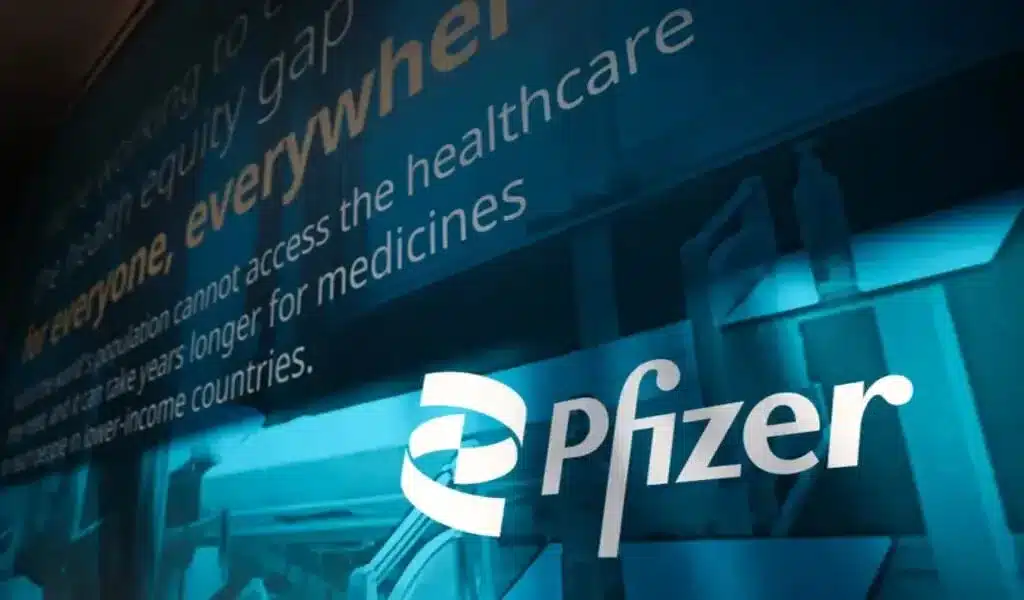
(VOR News) – According to a rumor that activist investor Pfizer Starboard Value has taken a holding in the struggling pharmaceutical business that is expected to be worth around one billion dollars, the stock of Pfizer (PFE) is on the increase in premarket trading on Monday.
This comes after the report was made public. The report was made available to the general public following this. Starboard Value was successful in moving forward with the acquisition of the position.
Starboard is said to have approached Ian Read, a former chief executive officer of Pfizer, and Frank D’Amelio, a former chief financial officer, in order to seek assistance with its goals of boosting the performance of the company, according to the Wall Street Journal. Read and D’Amelio are both former Pfizer executives.
The purpose of this is to facilitate the accomplishment of its objectives, which include enhancing the overall performance of the firm.
In their previous jobs, D’Amelio and Read were chief financial officers.
It is stated in the report that the hedge fund is of the opinion that Pfizer, which is currently being managed by Albert Bourla, who succeeded Read as Chief Executive Officer (CEO) in 2019, does not demonstrate the same level of mergers and acquisitions (M&A) discipline that Read did. Bourla took over for Read in 2019. Read was succeeded by Bourla in the year 2019.
Pfizer, a multinational pharmaceutical conglomerate, has made substantial investments in the acquisition of more companies that are involved in the research and development of cancer medicines.
These businesses have been acquired for billions of dollars. The biotechnology company Seagen, which was acquired by Pfizer in the previous year for a price of $43 billion, is included in this category. One of the businesses that can be classified as belonging to this category is Seagen.
In spite of the fact that the S&P 500 Index experienced a 21% increase in 2024.
No major trading occurred in Pfizer stock that year.
Due to the fact that the demand for Pfizer’s COVID-19 vaccines fell after the firm reached its pandemic peak in 2021, the share price of the corporation has decreased by over fifty percent since that time.
This drop has occurred ever since the company’s shares reached their maximum peak, which was during the time that this decline occurred. Not only have they not changed at all, but they have also remained essentially stable. This is in contrast to the S&P 500, which has gained 21% since the beginning of this year.
Recently, the corporation was forced to take a hit when it decided to recall all of the sickle cell illness medications that it had distributed all over the world.
Fears that the prescription could lead patients to experience severe agony and possibly even death were the impetus for the decision to recall the product. In spite of the fact that Pfizer’s stock is increasing by almost three percent as a result of the news that followed the company’s decision, this is the circumstance that has come about.
SOURCE: IPN
SEE ALSO:
New Study Reveals Drinking Soda Pop Increases the Risk of Stroke
The Mpox Vaccine’s Protection Decreases Within a Year; Booster Requirements
Health
New Study Reveals Drinking Soda Pop Increases the Risk of Stroke
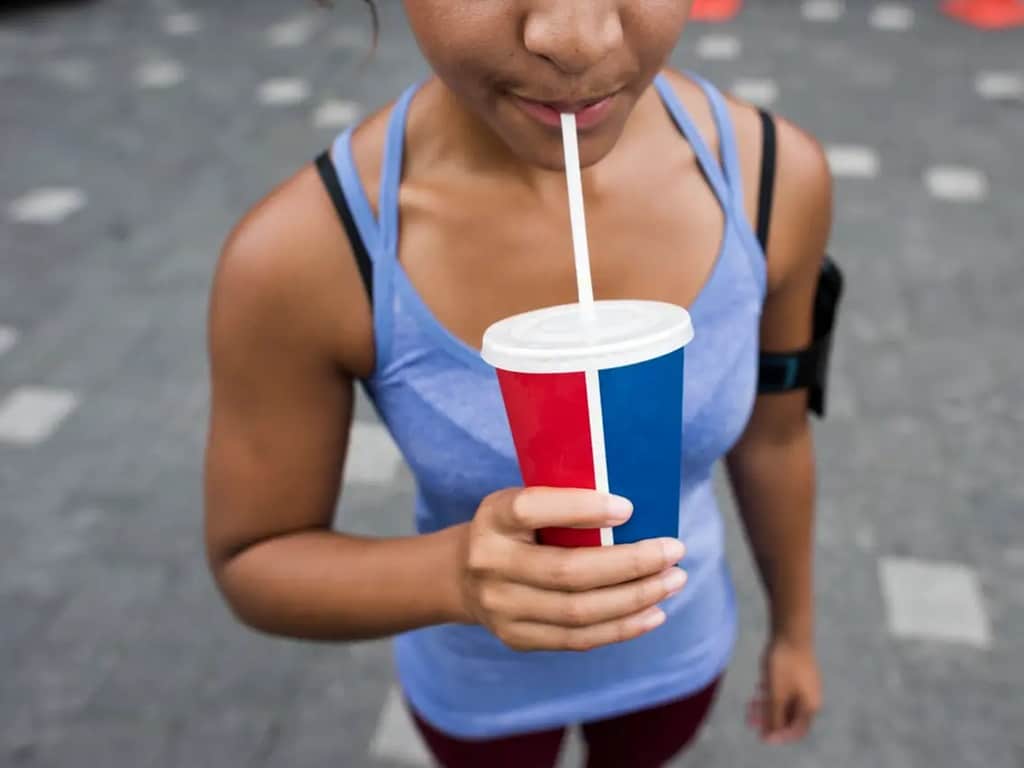
A recent report from global research indicates that excessive consumption of coffee or soda pop is associated with an increased risk of stroke, although the intake of black and green tea is correlated with a reduced risk. Excessive consumption of soda pop or coffee warrants caution!
Recent research indicates that it may substantially elevate the risk of stroke.
Consuming four cups of coffee daily elevates the risk of stroke, according to studies, although ingesting 3-4 cups of black or green tea daily typically offers protection against stroke. Additionally, consume more coffee; it may reduce your risk of mortality.
Recent findings from global research studies co-led by the University of Galway and McMaster University, alongside an international consortium of stroke researchers, indicate that soda, encompassing both sugar-sweetened and artificially sweetened variants such as diet or zero sugar, is associated with a 22 percent heightened risk of stroke. The risk escalated significantly with the consumption of two or more of these beverages daily.
Stroke Risk Fizzy Drinks and Soda Pop
The correlation between fizzy drinks consumption and stroke risk was most pronounced in Europe, the Middle East, Africa, and South America. Women exhibit the most elevated risk of stroke from bleeding (intracranial hemorrhage) associated with fruit juice beverages. Consuming over 7 cups of water daily diminishes the likelihood of stroke due to a clot.
Researchers observed that numerous items advertised as fruit juice are derived from concentrates and have added sugars and preservatives, potentially negating the advantages often associated with fresh fruit and instead elevating stroke risk.
Fruit juice beverages were associated with a 37 percent heightened risk of stroke resulting from bleeding (intracranial hemorrhage). Consuming two of these beverages daily increases the risk thrice.
Consuming over four cups of coffee daily elevates the risk of stroke by 37 percent, although lower consumption levels do not correlate with stroke risk. Conversely, tea consumption was associated with an 18-20 percent reduction in stroke risk. Additionally, consuming 3-4 cups daily of black tea, such as Breakfast and Earl Grey varieties, excluding green and herbal teas, was associated with a 29 percent reduced risk of stroke.
Consuming 3-4 cups of green tea daily was associated with a 27 percent reduction in stroke risk. Notably, the addition of milk may diminish or inhibit the advantageous effects of antioxidants present in tea. The lower risk of stroke associated with tea consumption was negated for individuals who added milk.
Disclaimer: This article is intended solely for informational reasons and should not be considered a replacement for professional medical counsel. Consistently consult your physician regarding any inquiries pertaining to a medical problem.
Related News:
Starbucks Faces Sales Decline Amid Price Fatigue and Rising Competition
Starbucks Faces Sales Decline Amid Price Fatigue and Rising Competition
Health
Following a Diagnosis of Breast Cancer, What Else Should You Know?
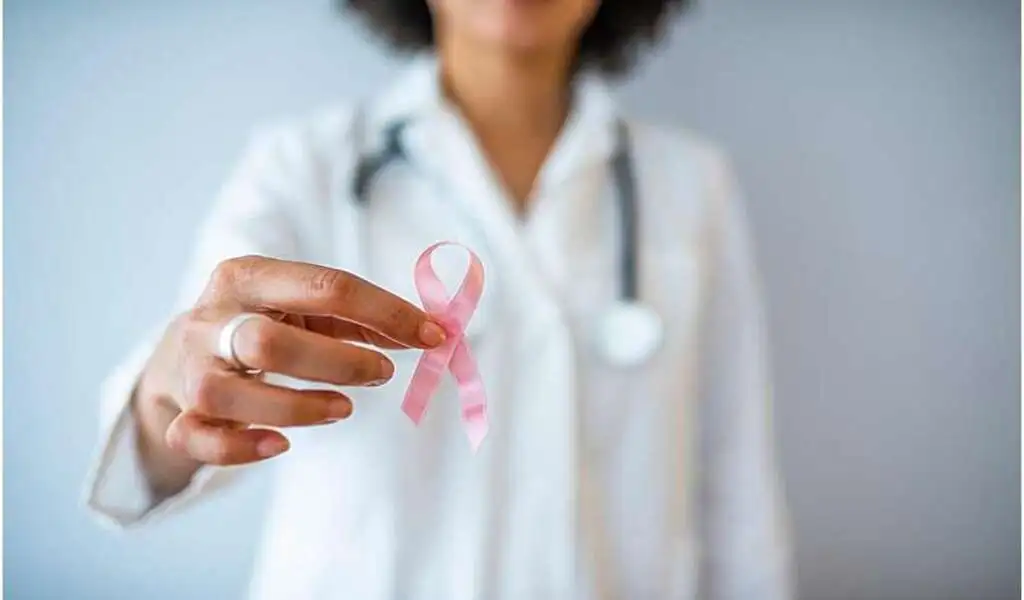
(VOR News) – Even though breast cancer affects one in eight American women, receiving a diagnosis can make a woman feel isolated.
Experts in breast cancer from the American College of Physicians (ACS) advise patients on how to manage their disease so that they may better cope with this awful information.
First, the kind and stage of breast cancer dictates the course of your care.
In addition to immunotherapy and chemotherapy, there are various surgical options available for the treatment of breast cancer.
Women of African descent are disproportionately affected by triple-negative breast cancer, an extremely aggressive form of the disease that has never proven easy to treat.
According to the American Cancer Society, pembrolizumab (Keytruda), an immunotherapy, has been shown to be helpful when combined with chemotherapy and is currently the recommended course of treatment for certain combinations of triple-negative breast cancer.
In her presentation, Dr. Katharine Yao said, “It’s really important that the patient and physician discuss the patient’s preferences and values when deciding what type of treatment to pursue and that they have an honest, individualized discussion with their care team.”
She is currently responsible for developing breast cancer treatment recommendations for more than 575 hospitals and institutions nationwide in her role as chair of the American College of Surgeons’ National Accreditation Program for Breast Institutions (NAPBC).
Yao, vice chair of research at Endeavor Health NorthShore Hospitals in New York, pointed out that each decision made about a patient’s treatment plan should take her preferences and diagnosis into consideration.
She ought to think about whether she would prefer a mastectomy—a surgical procedure that involves removing the entire breast with or without reconstruction—or a lumpectomy, which involves a surgical procedure that spares part of the breast tissue.
She stated that “the breast cancer you have may be very different from the breast cancer you hear about in your neighbor, colleague, or friend” in a press release issued by the American Cancer Society (ACS).
“Consider that while discussing breast cancer with others.”
Throughout your journey, it is critical that you look after your emotional health because having breast cancer may have a detrimental impact on your mental health.
“Getting a cancer diagnosis does not mean that everything in your life stops to be normal.” Director of the Fellowship in the Diseases of the Breast program at the Winthrop P. Rockefeller Cancer Institute at the University of Arkansas and state head of the American Cancer Society Commission on Cancer for Arkansas, Dr. Daniela Ochoa She thinks adding the burden of a cancer diagnosis and treatment to all the other pressures in life may be taxing.
“Managing stress and emotional health is vital component of a treatment plan.”
Ochoa recommends clinically trained psychologists and social workers who have assisted people in coping with cancer to anyone receiving treatment. Learning coping techniques might also be facilitated by joining cancer support groups or cancer wellness initiatives.
Breast cancer specialists say your care team is crucial.
The American Cancer Society (ACS) defines comprehensive care as having support at every stage of the procedure from surgeons, oncologists, patient navigators, nurses, social workers, psychologists, and other specialists.
After receiving a breast cancer diagnosis, women should see a surgeon or medical oncologist to explore their options; nevertheless, treatment shouldn’t be discontinued after just one appointment or after surgery is over.
Additionally, you can ask trustworthy friends or family members to accompany you to appointments and aid you with research or notes. They could serve as a network of support for you.
Yao stated in his talk that “one of the most important things is that patients should search out a team they have confidence in, that they trust will have their back when they need it, and a team they feel they can get access to and that will help them when they are in need.”
SOURCE: MP
SEE ALSO:
The Mpox Vaccine’s Protection Decreases Within a Year; Booster Requirements
COVID was a Paradigm Shift in Health Policymaking, Says Commissioner Stella Kyriakides.
Rwanda Reports 8 Deaths Linked To Ebola-Like Marburg Virus Days After It Declared An Outbreak
-

 News3 years ago
News3 years agoLet’s Know About Ultra High Net Worth Individual
-
Entertainment2 years ago
Mabelle Prior: The Voice of Hope, Resilience, and Diversity Inspiring Generations
-
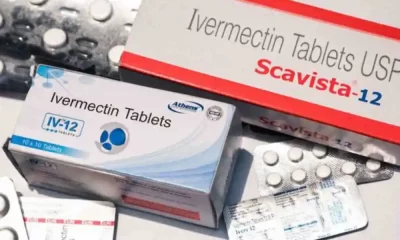
 Health3 years ago
Health3 years agoHow Much Ivermectin Should You Take?
-

 Tech2 years ago
Tech2 years agoTop Forex Brokers of 2023: Reviews and Analysis for Successful Trading
-

 Lifestyles2 years ago
Lifestyles2 years agoAries Soulmate Signs
-
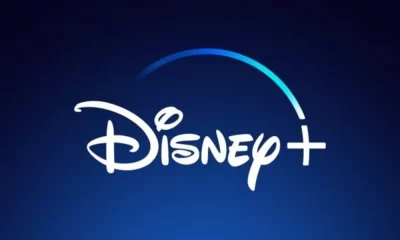
 Movies2 years ago
Movies2 years agoWhat Should I Do If Disney Plus Keeps Logging Me Out of TV?
-

 Health3 years ago
Health3 years agoCan I Buy Ivermectin Without A Prescription in the USA?
-

 Learning2 years ago
Learning2 years agoVirtual Numbers: What Are They For?
